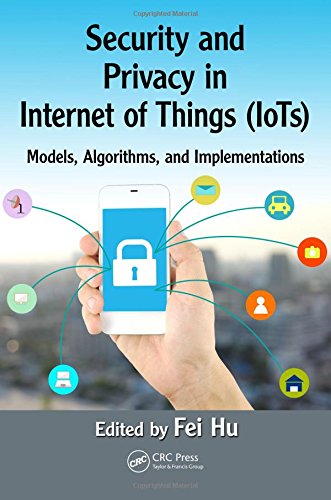

Most ebook files are in PDF format, so you can easily read them using various software such as Foxit Reader or directly on the Google Chrome browser.
Some ebook files are released by publishers in other formats such as .awz, .mobi, .epub, .fb2, etc. You may need to install specific software to read these formats on mobile/PC, such as Calibre.
Please read the tutorial at this link: https://ebookbell.com/faq
We offer FREE conversion to the popular formats you request; however, this may take some time. Therefore, right after payment, please email us, and we will try to provide the service as quickly as possible.
For some exceptional file formats or broken links (if any), please refrain from opening any disputes. Instead, email us first, and we will try to assist within a maximum of 6 hours.
EbookBell Team

5.0
100 reviewsThe Internet of Things (IoT) has attracted strong interest from both academia and industry. Unfortunately, it has also attracted the attention of hackers. Security and Privacy in Internet of Things (IoTs): Models, Algorithms, and Implementations brings together some of the top IoT security experts from around the world who contribute their knowledge regarding different IoT security aspects. It answers the question "How do we use efficient algorithms, models, and implementations to cover the four important aspects of IoT security, i.e., confidentiality, authentication, integrity, and availability?"
The book consists of five parts covering attacks and threats, privacy preservation, trust and authentication, IoT data security, and social awareness. The first part introduces all types of IoT attacks and threats and demonstrates the principle of countermeasures against those attacks. It provides detailed introductions to specific attacks such as malware propagation and Sybil attacks. The second part addresses privacy-preservation issues related to the collection and distribution of data, including medical records. The author uses smart buildings as an example to discuss privacy-protection solutions.
The third part describes different types of trust models in the IoT infrastructure, discusses access control to IoT data, and provides a survey of IoT authentication issues. The fourth part emphasizes security issues during IoT data computation. It introduces computational security issues in IoT data processing, security design in time series data aggregation, key generation for data transmission, and concrete security protocols during data access. The fifth and final part considers policy and human behavioral features and covers social-context-based privacy and trust design in IoT platforms as well as policy-based informed consent in the IoT.